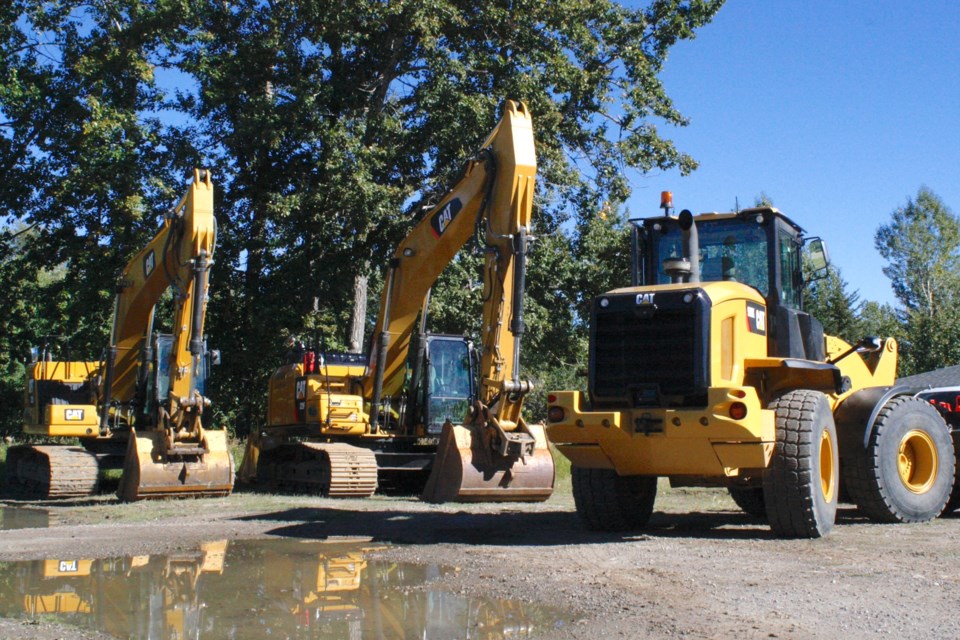SUNDRE – The Town of Sundre's water and wastewater operator recently had an opportunity to boast on a provincial stage about infrastructure projects completed last year that significantly reduced water leaks.
Shane Vollett presented alongside Reilly Roberts, a civil engineer in training with the firm McElhanney, at the 50th annual Alberta Water and Wastewater Operators Association (AWWOA) seminar, which was held March 10-14 at the Banff Park Lodge.
The presentation – called “Town of 2,500 saving $700,000 per year through infrastructure maintenance” – outlined the challenges and highlighted the success of the capital projects in 2024 that reduced water loss and increased future sustainability.
“There’s a lot of communities in the same boat we are with water loss,” Vollett told the Albertan during an interview on March 12 not long after wrapping up the 45-minute presentation that drew out a nearly full auditorium.
“I actually didn’t think a lot of people would be interested in our story,” he said.
But “we had people coming up asking questions. There was a lot of engagement,” he said.
“A lot of people got a lot from it.”
McElhanney is the municipality’s contracted engineering firm, and Vollett said, “They thought it was a good project to share.”
The work not only substantially reduced leaks but was also completed with efficiencies and cost savings, he said.
“We only had two projects slated for last year,” he said, referring to a mainline replacement and some sanitary work along Highway 27-Main Avenue as well as a loop at Second Avenue NW that corrected a big leak that occurred by the Sundre Arena two years ago.
“And we ended up with four mainline replacements. We did a lot with the same money that we got for those two jobs.”
Through efficiencies and savings in those two projects, the municipality was also able to do some work on Centre Street from the traffic lights to the Bearberry Creek bridge as well as a small portion from 3rd Street SW to 1st Avenue SW, he said.
“It was old cast that was all rotted,” he said. “When they went to attach the pipe to 3rd Street, there was nothing to attach to it – it just kept breaking up.”
As a result of the work, the infrastructure now has a much longer lifespan. In the past, some areas where smaller patch repairs had been conducted would result in the pressure just being pushed along to the next weakest point in the line, prompting another leak that would require repairs.
That was made further problematic because while the budget to repair water leaks had not really increased, the cost of fixing leaks had gone up, he said, adding the amount of money that once would fix half a dozen or so leaks now only covered the cost to repair a few.
But now “we’re at a nice level where our water loss is down,” he said, adding the replaced sections aren’t any time soon expected to have issues.
And although there remain other older sections that could yet suffer failures, the freshly replaced portions will through the process of elimination make identifying any new leaks that much easier, he said, adding it’s like have a big chunk of a 3,000-piece puzzle already figured out.
The department of course closely monitors water as well as wastewater lines and conducts an annual leak detection scan throughout the whole town, “but if a leak pops up, that’s probably the last area I’ll look,” he said, adding the search in such a situation will be focused more on sections that still have older ductile iron.
Chris Albert, director of corporate services, told council during the regular meeting on March 10 that the presentation came about as one of the town’s engineers, who has decades of municipal engineering experience, had said “this is the most successful project of containing water loss that he has ever seen.
“That is a very good success for Highway 27 and by extension the work that was done under Centre Street,” said Albert.
Presenting departmental updates during the regular March 24 meeting, chief administrative officer Linda Nelson said, “In one short season, we have had a reduction of 690,000 litres of water per day of inflow and infiltration into the lagoon and a reduction of 661,000 litres per day of water loss.
“Additionally, all of the critical underground infrastructure south of Highway 27 apart from about 400 metres is now good for about 75 years.”



